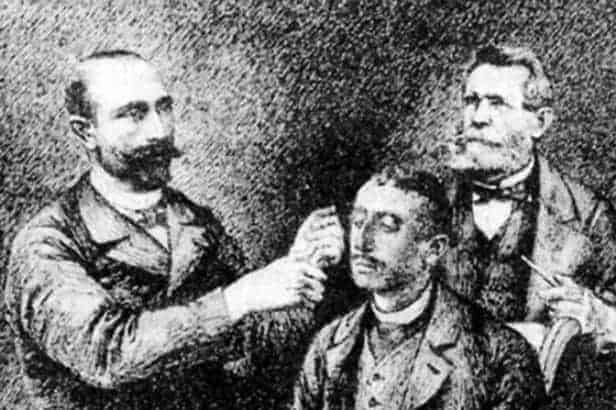Just like us, people of yesteryear tried to alleviate the boredom and humdrum existence of everyday life with various pastimes. And just like us, they sometimes came up with odd pastimes that were inexplicably fascinating, sweeping their societies for periods of time ranging from a few months to a few centuries. Then those pastimes faded into obscurity, leaving people from future generations scratching their heads at their ancestors’ weirdness. Just like we go through silly fads and pastimes today, earlier generations had their own strange pastimes, such as flagpole sitting, swallowing goldfish, or rioting over fashion.
Following are ten odd pastimes from history that are largely forgotten today.
Flagpole Sitting
In the 1920s, an eccentric and colorful character named Aloysius Anthony Kelly, popularly known as Alvin “Shipwreck” Kelly (1885 – 1952), kicked off a weird fad that swept America: flagpole sitting. Shipwreck Kelly became famous during the 1920s and 1930s for perching atop flagpoles for extended periods of time, and that fame attracted imitators and copycats. Before long, flagpole sitting had gone viral. And unlike today’s viral fads that last a few months, or maybe a year or two, max, flagpole sitting remained a “thing” over the span of two decades.
Strictly speaking, pole sitting was not an entirely new fad. In the early centuries AD, some Christian ascetics, known as “pillar saints”, lived on pillars, atop which they preached, fasted, and prayed. One of them stayed up on his pillar for 37 years. Shipwreck Kelly was the first to reintroduce that practice in a new form in the modern era, however, taking it from its ancient Christian roots, and popularizing it as a secular entertainment spectacle.

Kelly was born in New York City’s Hell’ Kitchen neighborhood, and was orphaned from the start: his father had died when Kelly was in the womb, and his mother died during childbirth. He was an adventurous and restless soul from early on, climbing his first pole at age 7, and pulling off a human fly stunt at age 9, when he scaled the side of a high rise building. At age 13, he ran away to become a sailor, then tried his hand at a variety of careers, from steeplejack to steelworker, as well as boxing, high diving, and a stuntman and movie double. He claimed to have earned the “Shipwreck” nickname for having survived five shipwrecks, two airplane crashes, and three automobile accidents. Other sources ascribe it to his having been such a hapless boxer, that he seemed adrift in the ring, like a shipwreck.
He kicked off the flagpole sitting fad in 1924 when, as a publicity stunt for the opening of a Philadelphia department store, Shipwreck Kelly perched himself atop a flagpole for 13 hours and 13 minutes. Something about that feat struck a chord in the national imagination. It was widely publicized, and within weeks, hundreds of people across the US were trying to break Kelly’s record for time perched atop a flagpole. Once the 13 hour and 13 minute record was surpassed, the competition continued apace and heated up, with hundreds vying for the title of “King of the Pole”.
Kelly regained his record in 1926, when he sat atop a flagpole in St. Louis, Missouri, for 7 days and an hour. He surpassed that in June of the following year, by sitting atop a flagpole in Newark, New Jersey, for 12 days. Throughout, he attracted huge crowds, as thousands gathered to watch his feats, with some camping out in the vicinity. Millions more followed daily updates in the newspapers or on the radio.
A born showman, the publicity hungry Kelly played up to the crowds on site and to a fascinated public across the country, giving them what they wanted with ever longer stints atop a pole. In 1929, he set a new record by sitting atop a flagpole in Baltimore for 23 days. The following year, before an audience of 20,000 admirers, he shattered that record by sitting atop a 225 foot high flagpole in Atlantic City, New Jersey, for a whopping 49 days and one hour.
Plenty of others tried to imitate Shipwreck Kelly in the 1920s and 1930s, but none achieved his level of popularity and fame, or racked up as many hours atop a flagpole as he did. By Kelly’s calculations, during a two decade career, he spent 20,613 hours atop flagpoles, including 210 hours in sub-freezing temperatures, and over 1400 hours in the rain.
He earned a fortune in the 1920s, charging admissions to his trials of endurance, preleasing then renting out apartments with sight lines to his entertainments, and from endorsements. However, flagpole sitting began losing its popularity after the 1929 Wall Street Crash, and faded out during the Great Depression. By 1934, Kelly was reduced to making ends meet by working as a gigolo in a Broadway dance hall.

